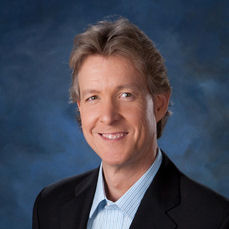

A dear friend of mine had a terrible fall. I was close by, and there was nothing I could do. What was most difficult to witness was the look on her face right before the fall: I could see as she started to fall she wanted to reach out to grab something. And I saw her looking at a safety bar next to her on the wall. Yet even though she saw the bar, and wanted to reach out her hand, her hand took an extra second to move and down she went. Thankfully, the fall looked was worse than her injuries and she is fine.
Has this ever happened to you? You tell your body to move quickly for some reason, and instead of moving quickly, our body says, “Give me a moment…” And in a situation where a faster movement could prevent a fall or any number of accidents, slow reflexes can mean disaster.
While there are many medical situations that can slow our reflexes, the most common culprit to moving slowly is moving slowly. And the solution to move faster is to move faster!
However, teaching our body to move faster does NOT mean walking faster, or intentionally trying to do things more quickly during the day; that is recipe for disaster. It means ADDING speed and coordination exercises to our daily routine that teach the body to move faster. This way, in an emergency situation, as in preventing a possible fall, we give ourselves the best chance.
Exercises to help you move faster:
Though there are many exercises that teach the body to move faster, I will focus on some quick tips to help get your feet and hands to move a little faster. Please see your doctor or physical therapist for additional exercises.
The Feet
Learning to move the feet quickly helps us in situations where our feet need to move quickly, and this can help with fall prevention.
Stand facing a sink or solid object and hold on with both hands, then:
a. The Tapping Jog: Alternate tapping feet on the ground, gently but quickly, as if you’re jogging in place. Keep your weight on the balls of your feet, switching feet gently. Work up to completely lifting each foot off the ground and try to be on only one foot at a time, as if you’re really jogging. Keep the feet low to ground to reduce impact. Do this 3 times for 10 seconds each, trying to go faster each time. Safety first here!
b. The Side to Side: Step side to side, a little wider than your shoulder width, getting the foot off the ground as you step, and try to hop a little as if stepping over a puddle. Do quickly, yet safely, 3 times for 10 seconds.
Note: This is a big effort on the heart. Please see your doctor first. And to begin with, please only do one set for 10 seconds and then later work up to 3 sets.
The Arms and Hands
Learning to move the hands quickly, as with my friend who fell, gives us the opportunity to catch ourselves, or prevent other accidents. This is my favorite:
The Sit and Toss Something: For this you’ll need something small and safe to toss around. Sit in a chair, feet flat on floor, hand palms down on top of your legs. Now with one hand toss the ‘something’ into the air right in front of you, and like a martial arts master, with the other hand try and snatch the object out of the air. This is instead of just catching it. Try to increase the speed that you can grab the object and at different heights and speeds. Catch and repeat with the other hand. Try tossing and catching with the same hand. Do this 10 times for 3 sets.
Teaching ourselves to move faster is about reminding our body to move faster by moving faster! Yet this must be done in a safe way, and not during everyday activities, such as walking or shopping. And remember, your brain may know what to do in a given situation requiring speed and coordination, yet if the body hasn’t done those movements for a while, those reflexes may not be there when you need them.
Training our reflexes with speed and coordination exercises can be best summarized by a client who had been feeling very shaky on his feet: We did a number of these exercises over the course of a few months, and I thought he was doing really well. And while exercising one afternoon, I asked him how he was feeling about his balance and coordination, and he said, “Wow- I forgot all about it! I was thinking about something else…” We should all be so lucky!
~Because you’re stronger than you think, and you can do more than you know!~
John Paul Ouvrier, known as The Wizard of Youth, is a fitness trainer who specializes in working with older adults. Please consult with your doctor or medical professional before beginning this or any exercise program or advice. The contents of this article do not constitute medical advice. Contact him at John@wizardofyouth.com and bring him in to entertain your audiences! http://wizardofyouth.com and http://fitness4charity.org
Leave a Reply